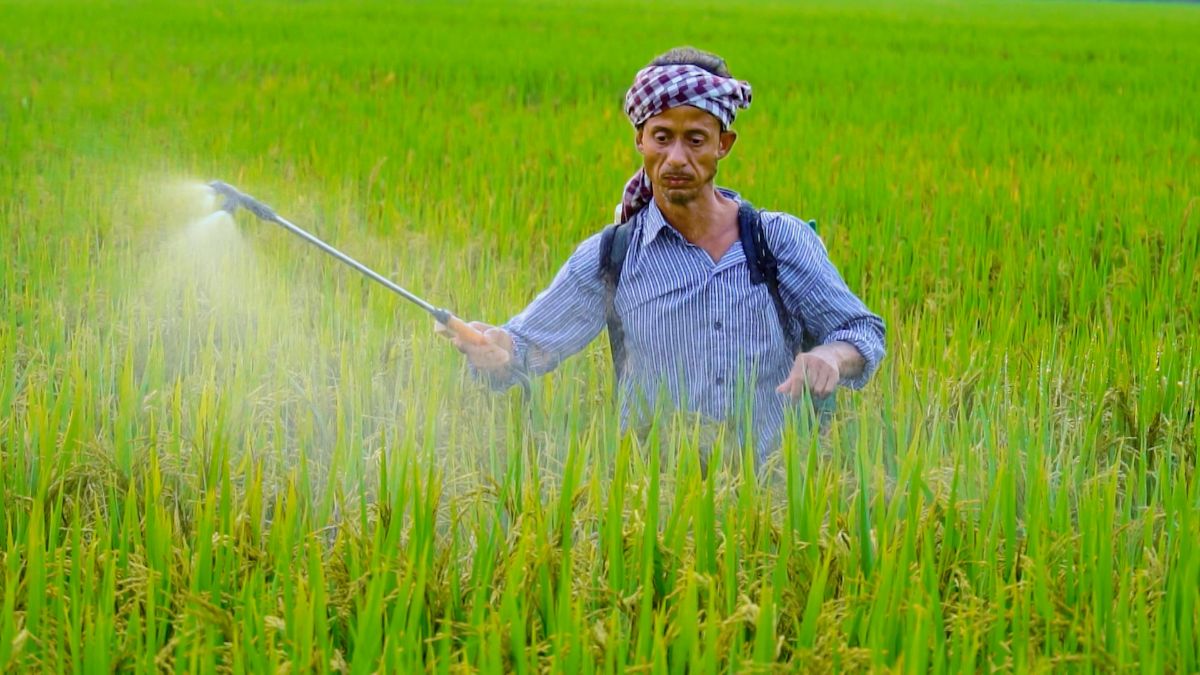Fertiliser crisis: Karnataka urea shortage sparks widespread farmer protests and political blame game

Chandrappa, a farmer from Kunikeri tanda in Karnataka's Koppal district, tired of waiting in the queue before the APMC – from 4 am to 4 pm, grabbed a fistful of mud and ate it in protest over the State government’s failure to provide fertiliser, especially urea, for the kharif (April -July) season.
A video of the farmer’s protest has gone viral. The Karnataka BJP, which launched a protest across the state, has alleged that the Siddaramaiah government has “hoarded” 2.5 lakh metric tonnes of urea to be sold in the black market.
“The Centre has already supplied 11.17 LMT (lakh metric tonne) of urea out of the allocated stock of 12.95 LMT. In July, the Centre provided 8.73 LMT and 7.73 LMT has already been sold. But the government outlets have put up a “no stock” board, forcing the farmers to buy from the black market,” alleged BJP state Raitha Morcha president A.S. Nadahalli, accusing the state government of diverting the subsidised urea to private hoarders to be sold at exorbitant prices.
BJP launches protest across district centres
The BJP has launched a protest on Wednesday and demanded the timely distribution of fertilisers to the farmers as the sowing season has already started.
Incidentally, the shortage of urea, leading to farmers’ protests, has made a comeback after 10 years.
In 2008, two farmers were killed and more than 10 other farmers were injured after the police opened fire to control the mob during a protest demanding fertiliser in Haveri. However, in 2015, the Modi government mandated that all subsidised urea, domestic and imported, be 100 percent neem-coated. Then, Union Chemicals and Fertilizers Minister HN Anath Kumar ensured that 100 percent of the urea meant for agriculture would be neem-coated to prevent diversion of fertiliser for industrial use. “Neem, as a natural inhibitor, slows the release of nitrogen and improves nutrient uptake. More importantly, neem coating has rendered the urea unusable for industrial applications and eliminated a major source of diversion,” Kumar had noted.
Neem-coated urea, a process reform, helped achieve greater efficiency, accountability, and farmer satisfaction by transforming the form and flow of urea. Also, the consumption of urea in India has reached 385 LMT in 2025, and the import of urea has reduced to 51 LMT during the same period. However, the current crisis has led to a political blame game between the ruling Congress and the BJP in Karnataka.
“The Congress government has created an artificial crisis and pushed the farmers to take to the streets. The agriculture minister should look beyond Bengaluru and Mandya and tour Kalaburagi, Raichur and Gadag districts to see the plight of farmers due to the shortage of urea,” said state BJP chief BY Vijayendra.
While a delegation of BJP MPs led by Union minister Prahlad Joshi met the Union Minister for Fertiliser minister JP Nadda to seek additional allocation for Karnataka for the kharif season, Chief minister Siddaramaiah slammed the BJP, saying the BJP government had opened fire on the protesting farmers and had no moral right to criticise the Congress party.
“I don’t need to take lessons from Vijayendra (state BJP chief). When his father (Yediyurappa) was the chief minister, the police had opened fire on the farmers demanding fertilisers,” said Siddaramaiah.
With the farmers resorting to protest across the state, the chief minister, in a letter to Union Minister J.P. Nadda, said there was a spurt in demand for urea and that the Centre had allocated 11.17 lakh metric tonnes of urea to Karnataka but supplied only 5.16 LMT, this Kharif season.
“The State needs 6.80 LMT of urea between April and July. The early release of water in command areas of Tungabhadra, Cauvery, and Krishna rivers has led to early sowing and the area under maize, which consumes higher quantities of fertiliser, has increased by two lakh hectares. Around 13,000 hectares of pre-kharif areas have been sown again. Amid a spurt in the demand for urea, the shortage is creating unrest among farmers,” said the CM, urging the Centre to release 1.65 LMT of urea.
'Ensured timely and adequate supply'
The Centre, in its reply, noted that it had ensured a timely and adequate supply of 8.73 lakh tonnes of urea against the pro rata quota of 6.3 lakh tonnes to Karnataka for the ongoing kharif season and also noted that the state had also recorded a sale of 7.08 lakh tonnes.
State Agriculture Minister N Cheluvarayaswamy supported the CM and said the Centre had supplied only 5.27 LMT against the allocated 6.70 LMT in July, and there was a shortage of 1.50 LMT.
Even as the ruling and the opposition parties indulge in the blame game, the farmers across the state, especially in the north Karnataka region, are aggrieved as they are unable to carry out the sowing for want of urea (fertilizer). If the neem-coated urea proved to be a boon to the farmers, there is an urgent need to streamline the fertiliser distribution system to ensure transparency and accountability, considering time is critical in agricultural activities and any lapse could impact the food production in the country.
India